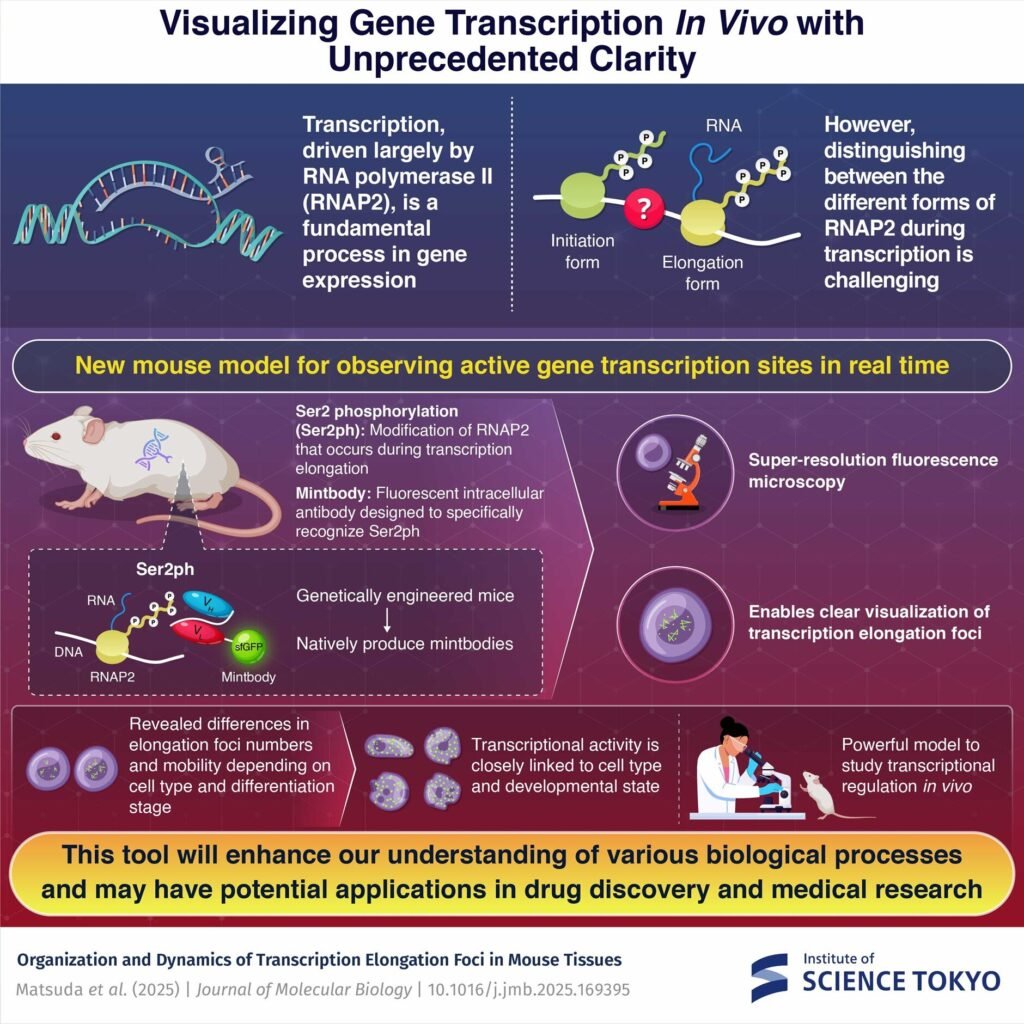A groundbreaking study from the Institute of Science Tokyo has unveiled a novel mouse model that allows real-time visualization of RNA Polymerase II (RNAP2) during DNA transcription. This innovative approach, reported by researchers, offers insights into gene expression dynamics at the cellular level, shedding light on transcription processes in living cells.
Transcription, the fundamental process by which RNA is generated from DNA, plays a crucial role in gene expression and protein synthesis. RNAP2, a key player in transcription, orchestrates the synthesis of RNA strands by unwinding DNA and transcribing genetic information. The journey of RNAP2 involves two main phases: initiation and elongation. During initiation, RNAP2 starts transcribing RNA from a gene’s beginning, while elongation involves the continuous extension of the RNA strand along the gene.
To observe RNAP2 in action and understand gene expression regulation more comprehensively, the research team led by Professor Hiroshi Kimura developed a unique mouse model capable of visualizing RNAP2 during transcription elongation. By genetically engineering mice to produce a modification-specific fluorescent antibody that binds to Ser2 phosphorylation (Ser2ph), a crucial modification of RNAP2 during elongation, the researchers were able to visualize transcription sites in living cells with super-resolution fluorescence microscopy. This groundbreaking method allowed for the dynamic observation of gene transcription activity in various tissues, uncovering differences in transcription patterns across cell types and developmental stages.
The study, published in the Journal of Molecular Biology, highlights the potential of this innovative mouse model in advancing our understanding of transcriptional regulation in vivo. By analyzing transcription elongation dynamics in different cell types and developmental states, the researchers identified distinct patterns of gene expression activity. For instance, immune cells in the spleen exhibited unique transcription patterns, while proliferating cells displayed more mobile transcription foci compared to differentiated cells.
Overall, this research paves the way for further exploration of transcriptional regulation mechanisms and their implications in development, differentiation, aging, and disease mechanisms at the cellular level. The newly developed mouse model holds promise for future applications in therapeutic development and precision medicine, offering a powerful tool for studying gene expression dynamics in living organisms.
For more information, you can access the original study titled “Organization and Dynamics of Transcription Elongation Foci in Mouse Tissues” in the Journal of Molecular Biology. This groundbreaking research from the Institute of Science Tokyo marks a significant advancement in the field of gene expression studies, providing valuable insights into the intricate processes of transcription at the cellular level.


